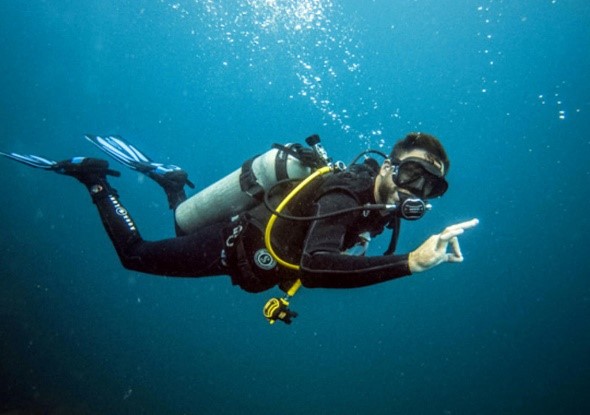Choose a different country or region to see the content specific to your location
Select Your Country/Region
Current Region:
 Global (EN)
Global (EN)
- Industries & Applications
- Diving Air Compressors
How can we help you?
Individuals engaged in scuba diving span the spectrum from the professional that is diving and using equipment on a daily basis to the recreational that only uses equipment once a year while on holiday. Whether professional or recreational, the quality and purity of the air that is provided by the cylinder are still as important. This in turn is dependent on the quality of the compressor package that is used to charge the cylinders.
Scuba diving cylinders are high pressure containers that can hold air at pressures in the range of ~ 150 to ~ 300 bar. To charge cylinders at this pressure requires special high pressure multi-stage reciprocating compressors which can come with fixed or variable speed operation. They offer a defined high pressure output with a certain volumetric flow that can rapidly charge scuba diving cylinders.
A schematic for a Reavell air compressor block that is typically used in the MAKO product range is shown below. This reciprocating four-stage cylinder compressor is in a “V” configuration and cooled by a large variable pitch fan.

In operation, air enters via the intake filter situated at the top and passes to the first stage where it is compressed before passing through a heat exchanger to the second stage. On exit from the second stage, it flows around a cooling system positioned in the fan air stream and then into a separator for condensate removal. On entering the third stage the air is further compressed before passing through the second cooling coil and condensate removal separator. Final compression takes place in the fourth stage before passing through a finned final cooling system.
High pressure reciprocating compressors are typically provided with either an electrical or diesel engine drive set which both come with pros and potential cons. Electric motors offer the following potential advantages
However electric motors can also come with a number of potential disadvantages that can include:
While for Diesel engines, the potential advantages can include
The disadvantages of diesel engines can include:
A high pressure diving air compressors deliver high-quality air at the desired pressure and volumetric flow. Reavell compressors are highly efficient and robust oil-lubricated compressors that when fitted into MAKO units come with purification filters that eliminate any potential contaminants.
There are strict standards around the quality of air delivered by air compressors in the Scuba Diving arena. The CGA (Compressed Gas Association) Pamphlet G-7 is typically used for testing activity based out of America while the European standard EN 12021:2014 is generally used for testing in Europe. The table below completes s comparison and the two areas one might expect are similar, however, there are slight differences with the European standard being more stringent on certain particulates.
It is important that in selecting a high pressure air compressor package for Scuba Diving applications not only the pressure and charging rate are considered but also the quality and purity of the air that is going into the cylinders.
| Potential contaminants | CGA Grade E | EN 12021:2014 |
|
| Allowable limits | Allowable limits |
| Carbon Dioxide (CO2), ppm | 1000 | 500 |
| Carbon Monoxide (CO), ppm | 10 | 5 |
| Odour | No significant odour or taste | No significant odour or taste |
| Oil condensed (mg/m3) | 5 | 0.5 |
| % Oxygen | 20 -22 | 20 – 22 |
| Water ppm v/v | None Present | None present |